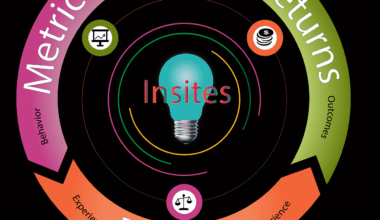From Blog to E-book: Repurposing Content for Deeper Audience Engagement
Content creation is a dynamic strategy that businesses utilize for captivating audiences. However, many overlook the potential of content repurposing as an effective method for maximizing existing material’s value. For instance, a blog post can be transformed into various formats to reach a broader audience. The process begins with identifying key themes within your original blog content. After extracting these themes, you can present them through different mediums, such as social media snippets, informative infographics, or a comprehensive e-book. The e-book format, in particular, allows for deeper dives into topics that will maintain and engage your audience. By offering value in diverse forms, you not only cater to varying preferences but also enhance the original blog’s reach. Your readers may prefer visual content, while others might enjoy traditional text formats. Thus, the transformation isn’t just about recycling, but also tailoring content to suit diverse consumption styles. This multipronged engagement builds stronger relationships with audience members, fostering loyalty and trust. Combining insights from various formats can result in higher retention and a more profound connection that is crucial in today’s marketing landscape.
After repurposing your content into an e-book format, you can further enhance engagement by promoting it effectively through various channels. Share snippets of your content on social media platforms, leading back to the e-book. Utilize visually appealing graphics and effective calls-to-action that encourage readers to download or interact with it. Email marketing is another robust channel to distribute your e-book, allowing you to reach your subscribers directly. Craft engaging newsletters that highlight key chapters or themes from the e-book. This strategy not only provides readers with useful material but entices them to explore further. Additionally, promote the e-book during webinars or live Q&A sessions. This method establishes credibility as you deliver insights and answer questions about your content, eventually drawing readers towards your e-book. Engage influencers in your niche by offering them a sneak peek, encouraging them to share their thoughts and experiences with their audience. The ripple effect can lead to increased visibility and interest in your e-book, ultimately driving downloads and engagement. Remember, a well-planned distribution strategy is just as crucial as creating valuable content for effective audience engagement.
Understanding Your Audience’s Needs
To optimize content repurposing, understanding your audience’s preferences and behaviors is essential. Conduct thorough research to gather insights about their interests, demographics, and preferred content formats. Utilize analytics tools to track user engagement on various platforms, helping you identify what resonates most with your audience. The goal is to ensure that the e-book not only meets but exceeds their expectations. Engaging with your audience through surveys or direct feedback can also yield essential information. Ask them what topics they find most valuable or which formats they enjoy. When you tailor your e-book to their needs, you foster anticipation and excitement for the launch. Building a reader persona can also guide your content strategy; visualize who your ideal reader is and what their motivations might be. Equipping yourself with this knowledge empowers your content repurposing strategies. You can create targeted and engaging materials that resonate with your audience. In turn, this approach enhances reader satisfaction, leading to increased shares and referrals. Ultimately, understanding your audience forms the bedrock of successful content transformation that encourages long-lasting engagement.
One of the most significant advantages of repurposing content lies in maximizing its SEO potential. By transforming a blog post into an e-book, you can enhance keyword focus and overall discoverability by optimizing it for search engines. Begin by researching relevant keywords and phrases that your target audience frequently searches for. Incorporate these strategically throughout the e-book, including in headers, metadata, and descriptions. Ensure each chapter features a unique angle that highlights specific keywords effectively while maintaining quality content. In turn, the e-book can serve as a strong lead magnet, attracting organic traffic to your website. Additionally, promote your e-book through guest posts or collaborations with other blogs, establishing backlinks that can improve search rankings. As people download the e-book or mention it in their networks, natural backlinks can increase, bolstering your content’s authority online. Consistently updating and optimizing your materials guarantees they remain relevant and helpful, enhancing your strategic visibility. Good SEO practices ensure your repurposed content continually reaches new audiences eager for information, nurturing greater engagement over time.
Design and Visual Elements
Aesthetics significantly affect reader engagement, especially in content like e-books. Incorporating visuals into your e-book is a critical aspect of content repurposing. Ensure to align all visual elements with your branding while maintaining a professional appearance. Utilize infographics, charts, and photographs to underline vital points and illustrate key concepts effectively. Create engaging layouts with headings, bullet points, and whitespace to make the content more digestible. Readers tend to respond well to visually appealing layouts, which can foster interaction and comprehension. Using tools like Canva or Adobe InDesign can aid in designing layouts that captivate your audience. Keep in mind that while aesthetics are essential, content quality should not be compromised. Strive for a harmonious balance between stunning visuals and valuable text. Also, consider the user experience when designing; ensure your e-book is easy to navigate, with hyperlinks for further reading. Well-structured content can be the difference between a reader finishing the e-book or simply skimming through. Aesthetic appeal combined with engaging content serves to create a compelling e-book that not only attracts but retains audience interest.
After successfully repurposing your content into an e-book, it’s essential to monitor engagement metrics to evaluate effectiveness. Use analytics tools to track downloads, read rates, and overall audience interaction with the e-book. This data provides insights into whether the e-book meets reader expectations and interests. Engage with your audience and prompt feedback through surveys or comments, aiming to discover which sections they found most valuable. Furthermore, analyze which promotional strategies garnered the most engagement and drive traffic towards the e-book. This comprehensive analysis enables continuous improvement in your content strategy as you identify what works and what doesn’t. Adjust your future e-book projects based on feedback, ensuring you are always addressing your audience’s evolving needs. Monitor trends to discover new topics or formats that may be of interest in the future. Iterating on your e-book engagement strategies allows you to remain relevant and connected to your audience. Consistently seeking improvements not only boosts current engagement but also sets the stage for future projects, ensuring they resonate even more profoundly within your audience.
Conclusion: Optimize and Engage
In conclusion, transforming a blog into an e-book offers an incredible opportunity for deeper engagement with your audience. Content repurposing enables you to reach audiences across multiple formats, appealing to diverse preferences. By understanding audience preferences, optimizing for SEO, designing visually appealing layouts, and monitoring engagement metrics, you establish a robust strategy that promotes further interaction. The process doesn’t end with launching the e-book; continual refinement and adaptation based on audience feedback lay the foundation for success. Remember to leverage promotional techniques that resonate with your audience, facilitating higher conversion rates and brand loyalty. Your effort in maximizing existing content can lead to remarkable transformations in audience engagement. By repurposing effectively, you position yourself as an authority within your niche while creating valuable resources that audiences appreciate. As you embark on this journey, stay committed to evolving and innovating every aspect of your marketing approach, ensuring it remains inclusive and effective. Ultimately, the goal is to foster enduring connections with readers, open new avenues for engagement, and consistently add value through your content efforts.
With these strategies at hand, you are now equipped to take your content marketing to new heights. Embrace the power of content repurposing and enjoy the fruits of deeper audience engagement.


